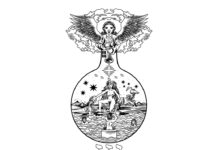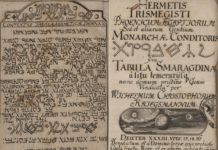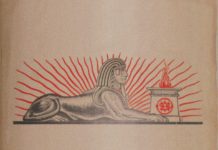Uncovering the Chain from Hermes to Christian Rosenkreuz
Today I’d like to start out by thanking the Rosicrucian Commentators who have participated on previous post and for sharing their insights because it is these friends and you readers who keep this blog alive. My last post questioning; ‘Are the Rosicrucians Really Christians?’ raised a more than a few eyebrows.
I stated irrevocably that the original Rosicrucian movement wasn’t Christian, but rather ‘Hermetic-Christian’ to be exact. It IS Christian, but with a Hermetic spin.
So far we have seen that Apollo and Venus were tied to the original documents and this proves useful in helping to define the Rosicrucian tradition for the present project. Reviewing the Rosicrucian Orders isn’t going to be an easy task. That’s why I am going to spend a little more time justifying my views.
I believe we can, as a community, over the following weeks arrive to a mutual standard by which to measure Rosicrucian Orders in terms of the value they offer new students.
At present we are discussing the traditional value of each Order, the ‘Adherence to Tradition Score’ which makes for 20 of 100 points in their overall rating.
For late comers, I am going to review the merits of each major Rosicrucian Order, award them with star and point ratings based on a standard I am presently developing. That standard will be the measuring stick by which those reviews are done, and the next few blog posts will help describe how that standard was arrived to.
Today’s post uncovers the Hermetic developments that led up to the Rosicrucian manifestos of the 1600’s and how those ideas were incorporated into the early tradition. The teachings of the Egyptian sage Hermes will here be examined, and its return in Europe until manifesting in the R.C brotherhood.
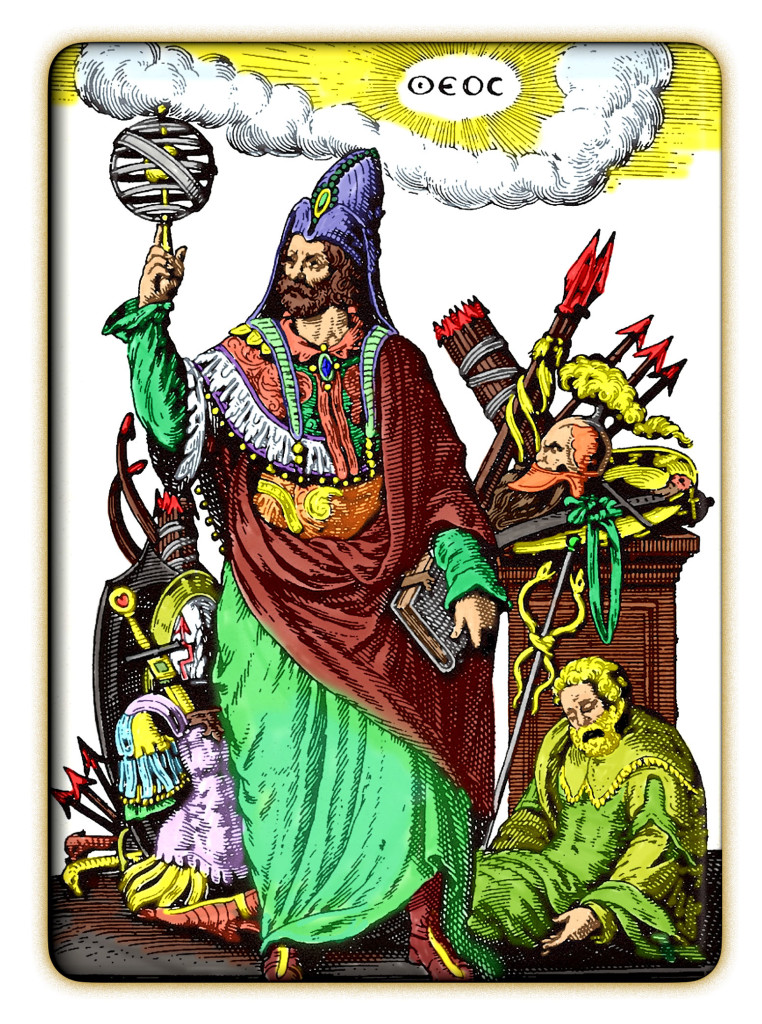 So let’s start at the beginning.
So let’s start at the beginning.
Hermes Trismegistus, Thrice Great Prophet of the Winged Sun.
Studying the ancient Hermetic treatise Ficino stated ‘he was called Trismegistus because he was the greatest of Philosophers, of Prophets, and the greatest of Kings.’
Dating to the Hellenistic era (Think the Library of Alexandria here) the writings of Hermes are a mixture of Neo-Platonic thought and Egyptian magic, applied to the purpose ascending above the planets for the goal of gnosis. But when you use the word ‘Gnosis’ people typically think of the Christian-Gnostics themselves, forgetting that; in fact the works of Hermes represent an Egyptian tradition of Gnosis, or Self Knowing, with Hermes himself in the position of its messenger and prophet.
Strangely the Corpus Hermetica states that God sent his only son to instruct Hermes in divine wisdom. His son here is named Poimandres; which translates to ‘Knowledge of Ra’ in Egyptian, and as ‘Sheppard of Men’ in ancient Greek. This was a big deal for church fathers and renaissance thinkers.
This Poimandres, as Sheppard, they said was Christ in spirit who had appeared to the prophet Hermes in order to instruct humankind long before his coming as Christ incarnate.
Here we can already see the Egyptian wisdom emerging in the Rosicrucian system.
Concerning the Rosicrucian connection to the Hermetic stream we have to take a look at the all-important ‘Lament of Hermes.’ Here Hermes bewails the loss of true Egyptian gnosis and piety.
“O Egypt, Egypt, of thy religion nothing will remain but an empty tale, which thine own children in time to come will not believe; nothing will be left but graven words, and only the stones will tell of thy piety. And in that day men will be weary of life, and they will cease to think the universe worthy of reverent wonder and of worship.”
You can watch a reading of this section from Graham Hancock here:
Why is the lament of Hermes so important to the Rosicrucian tradition? It’s because not only does Hermes predict the end of Egyptian piety, but he prophesizes the restoration of his mysteries through a certain rebirth of the cosmos, which would occur in the heavens above
“The Kosmos will once more be deemed worthy of worship and wondering reverence, and God, the maker and restorer of the mighty fabric, will be adored by the men of that day with unceasing hymns of praise and blessing. Such is the new birth of the Kosmos; it is a making again of all things good, a holy and awe-striking restoration of all nature.”
You have to follow the trail through history, because this little piece of Hermes is given life and form step by step through history, until it is completed in the Rosicrucian the Fama.
I am reluctant here to point out that Timothy Freke and Peter Gandy also published a most interesting fragment revealing that Hermes plans to build a secret ‘engine’ that acts as some sort of celestial mechanism. It is a device or clockwork, regulated by cogwheels of planetary orbits, the zodiac, the stars and the sun and moon; and it controls the events on earth as well as the life of men by design.
‘Hermes said “I will build a secret device, linked to unerring and inevitable fate, by which all things in men’s lives, from their birth to their final destruction, shall by necessity shall be brought into subjection, and all things on earth shall likewise be controlled by this device.”
The word device/mechanism/clockwork is used alternatively in various books. What this little fragment seems to relate to is an important geometric city of Hermes described in the Picatrix.
Adocentyn, the Talisman City of Hermes
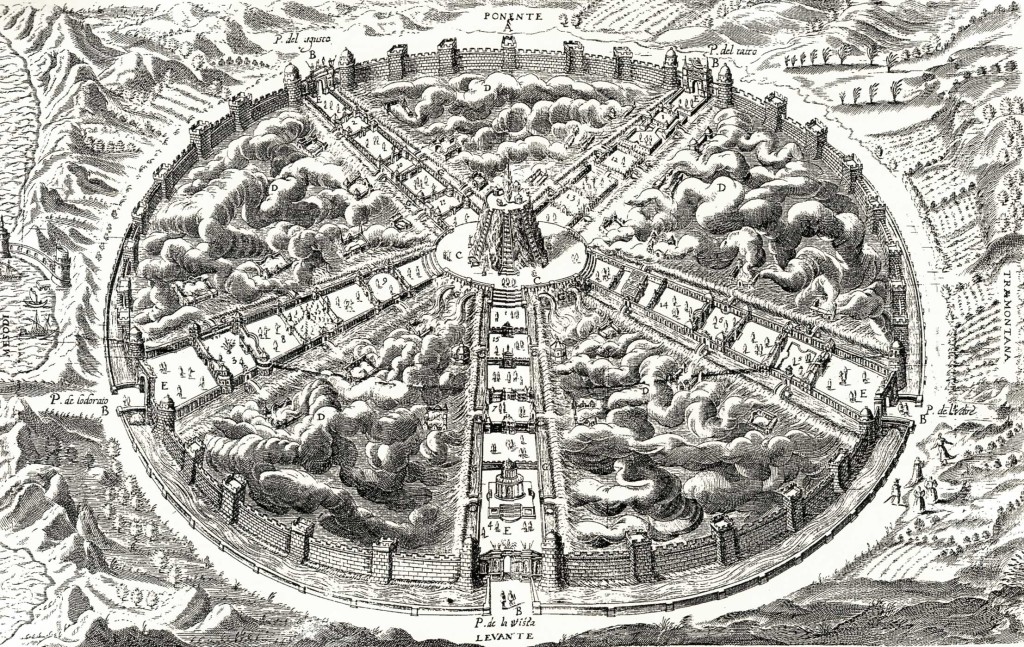 Picatrix describes an entire city known as Adocentyn, which seems to fit the bill.
Picatrix describes an entire city known as Adocentyn, which seems to fit the bill.
In the Latin version a magical city is designed by Hermes, which acts as a magical talisman. It was situated ‘near abundant water’ and at the center Hermes built ‘a temple of the sun.’
Built in Egypt, twelve miles long, Hermes fashioned statues of the Bull, Lion, Eagle and a Dog at the four quarters to stand watch. Yeats points out;
“In the prophecy in the Asclepius, after the Lament, of the eventual restoration of Egypt, it is said ‘The gods who exercise their dominion over the earth will be installed one day in a city, at the extreme limits of Egypt, a city which will be found towards the setting sun.’ In the context of the Asclepius the city of Adocentyn might thus be seen, both as the ideal Egyptian society before its fall, and as the ideal pattern of its future and universal restoration.”
Who would have thought, the gods would be city slickers? The question now is, did the Rosicrucians use this pattern on which the city-talisman was designed, and in which way?
Bruno, the Italian Hermeticist before the Rosicrucians
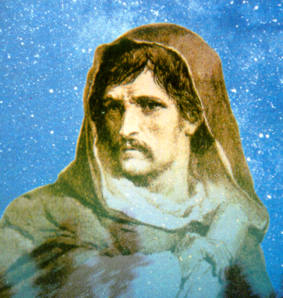 The Hermetic tradition had vanished until Ficino created a Neo-Platonic revival in Renaissance Italy. Several scholars have recently labeled Ficino’s approach as ‘Hermetic-Neo-Platonism’ as well, seeing that several of Ficino’s writings diverge into Hermetic practices. Putting aside other translation projects, Ficino enthusiastically translated the Corpus Hermeticum saying that ‘Plotinus can wait,’ which in itself shows you just how important Hermes was to the Italians.
The Hermetic tradition had vanished until Ficino created a Neo-Platonic revival in Renaissance Italy. Several scholars have recently labeled Ficino’s approach as ‘Hermetic-Neo-Platonism’ as well, seeing that several of Ficino’s writings diverge into Hermetic practices. Putting aside other translation projects, Ficino enthusiastically translated the Corpus Hermeticum saying that ‘Plotinus can wait,’ which in itself shows you just how important Hermes was to the Italians.
In Italy Hermes was loved again and carefully studied. Several Hermetic and Neo-Platonic forms of mysticism arose and these would become direct inspirations for the later Rosicrucian tradition. ‘The Reformation of the Whole Wide World by Order of Apollo’ is just one example.
We don’t have time to cover everything, but one man you need to know: Giordano Bruno 1545 – 1600.
This Dominican Friar was considered quite a naughty boy by the church, so much so that they executed him for charges of dealing in magic and divination and teaching contrary to the church.
To me he is an absolute hero, even the ideal of how to execute mysticism. One of his works titled ‘Spaccio’ is quite important to the Rosicrucian tradition because it describes an astral magic carried out by the gods. His Spaccio goes into great length about how the powers of the stars can be brought on earth in order to shape our world. He calls it ‘the magic of the divine cult of the Egyptians.’
Bruno reproduces several passages from Hermes, particularly the Lament of Hermes above and he highlights that the religion of Hermes will be will be accorded honor and acclaim, and be restored to full glory once again. More importantly, for Bruno the time of fulfilling this prophecy was near.
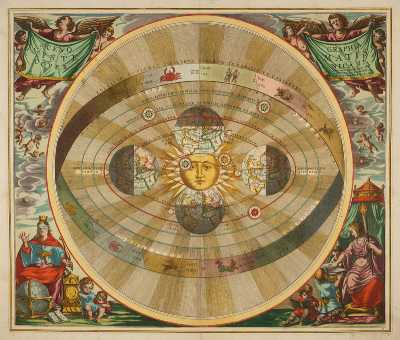 What he was looking for was a sign. What was the sign according to Bruno?
What he was looking for was a sign. What was the sign according to Bruno?
He writes ‘the sign in heaven proclaiming the return of Egyptian light to dispel the present darkness is the Copernican sun.’ Yes, he looked at the model of the Copernican sun as a holy talisman. For him it functioned as a Hermetic Seal that he saw as working on many levels, from above to below.
With its sun in the center and its surrounding planets it became a divine emblem, for Bruno believed that Copernicus had uncovered the sun-centric universe of the Egyptians.
But that’s not all.
He also knew the idea of a sun-centered universe would undermine the teachings of the church to its very core. In fact Bruno in his Spaccio sets into motion something the Rosicrucians would later repeat, that this fulfillment would drive out the triumphant beast, which for him was the Pope. In his mind this would make way for the restoration of the coming Hermetic religion.
Hermetic law states that the higher celestial planes control what transpires on earth, thus for Bruno the reformation of the world first had to take place in the realm of the gods.
The Gods Assemble for an Astral Reformation
The Rosicrucians were very concerned with the reformation of society, of culture, of politics and learning. Civilization was in need of regeneration. Bruno saw it coming, but remaining true to Hermetic treatises, as Isis explains to Horus in the Corpus, the higher worlds change the earth, and not the other way around. For a true reformation to take place, for Bruno, it had to occur first in the heavens.
In his Spaccio, this reform starts when Jupiter summons Isis and the gods to a conclave, and he wishes to reform the whole world, which shall first be achieved by the cleansing of the constellations. The virtues and vices of each of the 48 constellations are covered and the Spaccio actually describes the formation of a universal personality, not unlike the Universal Adam character of legend.
The gods present are:
 Jupiter
Jupiter- Apollo
- Mercury
- Saturn
- Mars
- Venus
- Diana
- Juno
- Minerva
- Neptune
- Isis
Magic is the vehicle employed to help accelerate the reformation of the world, and Bruno says a talisman is needed for the gods, whether in the form of an entire city serving the purpose, or as a smaller geometric pattern, such a talisman might speed up the process.
In other words, as above, so below.
By entering into the realm of the gods he would become a participant in the event, and the appearance of the Copernican sun was proof the gods were reaching out and providing such a holy seal. His duty, as a Hermetic mystic, was to assists in this astral reformation.
Using the Copernican sun as a holy talisman, he placed it upon the altar, and positioned seven candles around the altar, mirroring the pattern of the city of Hermes with its sun temple at the center.
If you are one of those special readers where the penny just dropped, congratulations.
Some of you will understand that the ‘pattern of Hermes city,’ as Yeats says, is being transferred.
The Talisman City is about to become a Talisman Cloister.
Tommaso Campanella
Aside from the Protestant reformation and its related ideas there are few reasons for why the Fama Fraternitatis of the Rosicrucians should describe a seven sided tomb such as it does. By viewing Protestant mysticism alone, by itself, we would encounter the German Theosophy of Boehme and friends. The Rosicrucian tradition is clearly enriched by some additional vein of knowledge, so that it becomes quite clear that the reformation of the gods in the higher worlds, the use of a divine talisman as a facilitator, and the fulfillment of the prophecy of Hermes is pouring into the tomb of CRC.
Of course, the Hermetic and Rosicrucian writers themselves were connected.
Tommaso Campanella (1568 – 1639) is the link between Bruno and the Rosicrucians.
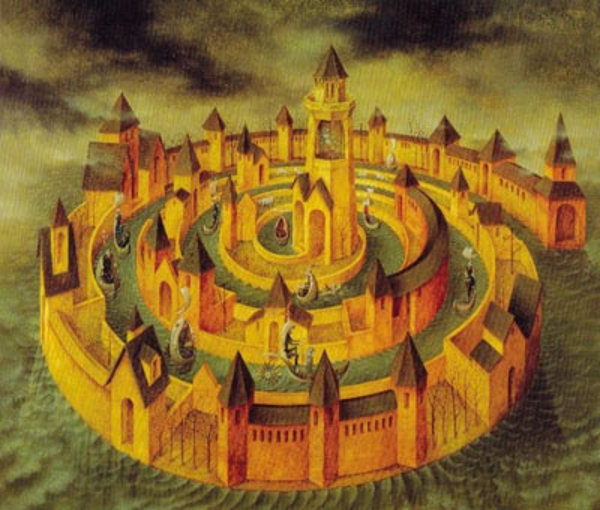 In his work ‘Civitas Solis’ he describes another ‘City of the Sun’ which is the Latin title of the book. In it he expands upon the city of Adocentyn described in the Picatrix and the Art of Memory.
In his work ‘Civitas Solis’ he describes another ‘City of the Sun’ which is the Latin title of the book. In it he expands upon the city of Adocentyn described in the Picatrix and the Art of Memory.
His version of the city of Hermes is quite interesting because the city is located upon a hill, and has seven sides. Instead of a temple of Apollo we find Christ positioned at center.
His work, the ‘City of the Sun’ is also one of three books which comprise the tradition of Pansophy. As many of you know Pansophy is one of the keywords connected to the early Rosicrucian tradition. My next post will elaborate on all three volumes and Pansophy some more.
What is so important here about his work, was that not only was it circulated in Germany, but his main disciple and translator was named Tobias Adami. Yep, that’s right, he was one of the members of the famous Tubingen Circle, which is said to have written the Rosicrucian manifestos.
The Rosicrucian Tomb as a Talisman of the Gods
Much as I would love to elaborate and compare the ideas behind the City of the Sun, their structures and design, this post is now long enough. The problem with this post is that some readers will assume that I believe this to be the central theme of the Rosicrucian mystery, whereas in fact it is but one of many intelligent designs distilled into the manifestos. Each post here simply highlights those influences step by step, so before anyone goes trumpeting that there are other significant elements, I’ll do my best to cover those as this blog develops. Here is a quick summary of today’s insights:
- Hermes prophesizes the loss of Egyptian religion and a departure of the gods.
- The prophecy concludes that they shall return.
- The gods, it is written, shall be installed into a city.
- That city is also some sort of talisman and holy machine.
- Bruno sees the Copernican Sun as the image of the foretold mystery.
- In his myth the gods degree a reformation of the world and their return.
- This heavenly reformation occurs around the talisman as well.
- Bruno places seven candles around it, and invokes the return of the gods.
- Hermetic work states that what is above shall be below.
- The return of the gods shall also bring a worldly reformation of human culture.
- His seven candles, the altar and the sun is the temple talisman in total.
- Campanella describes a city of the sun in the same model. It has seven sides.
- His disciple is Tobias Adami, a German member of the Tubingen Circle.
- That circle, with Johan Valentine Andreas, write the Rosicrucian manifestos.
- They include a seven sided structure, with a solar center, called the Tomb of CRC.
What I would like to conclude with today are some ideas concerning Hermetic invocation and how this all becomes relevant to a living Rosicrucian tradition.
Firstly, I will repeat, Gnosticism is a poor supplement for Rosicrucian teachings. The Hermetic teachings are more in line with our tradition, especially in relation to the prophecy of Hermes.
Also, several Rosicrucian traditions today are either strictly Christian or ignore Christ altogether. What we have encountered here today is a stream of ideas running from ancient Egypt through Hermes, the fulfillment of his prophecy, and an assembly of gods polarizing the R.C tradition.
Those ancient ideas enter into a form of Hermetic-Christianity which we call the Rosicrucian tradition.
My conclusion here is that the ancient gods of the Hermetic tradition, old Isis and Jupiter, may still be invoked and called upon and that this is in keeping with not only Rosicrucian history, but also is in line with a stream of spiritual power that flows into the R.C receptacle. Following in the footsteps of these gods and philosophers, one may effectively still invoke the gods and remain true to the Rosicrucian current. So long as those invocations conclude with a Christ or solar symbol, so long as they are received into the receptacle of the Rosicrucian tomb, or into the name of Yehashua; there is absolutely no reason why anyone working our tradition need feel that the ancient powers do not flow into our tradition.
After all, they are the astral powers above, which first formed in the heavens a celestial reformation, after which the worldly one was then to take place. Do we owe them some gratitude? Yes.
As above, so below said Hermes. With gods above, and a Rosicrucian tomb below, acting as a talisman, drawing forth the powers of a reformation in heaven, that of the gods.
Your friend on the path,
Samuel Robinson
Founder of Pansophers.

